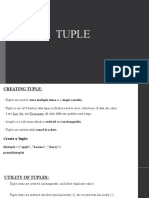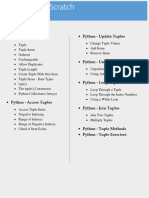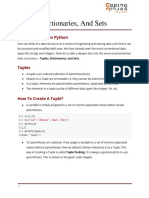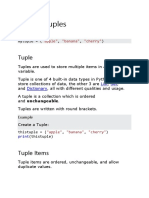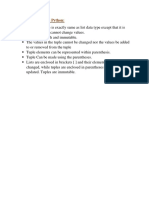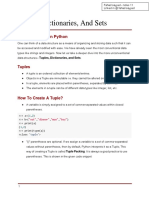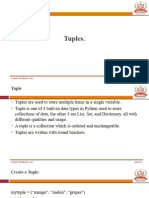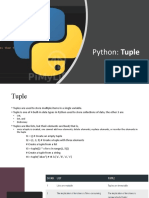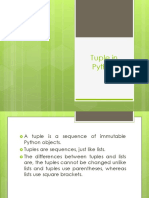0% found this document useful (0 votes)
26 views7 pagesTuple
Tuples in Python are immutable collections that can store multiple items of any data type, written with round brackets. They allow duplicate values, are ordered, and can be accessed via indexing. Although tuples cannot be changed or have items removed, they can be converted to lists for modifications, and new tuples can be created by adding items or combining existing tuples.
Uploaded by
aizenkurosaki233Copyright
© © All Rights Reserved
We take content rights seriously. If you suspect this is your content, claim it here.
Available Formats
Download as PDF, TXT or read online on Scribd
0% found this document useful (0 votes)
26 views7 pagesTuple
Tuples in Python are immutable collections that can store multiple items of any data type, written with round brackets. They allow duplicate values, are ordered, and can be accessed via indexing. Although tuples cannot be changed or have items removed, they can be converted to lists for modifications, and new tuples can be created by adding items or combining existing tuples.
Uploaded by
aizenkurosaki233Copyright
© © All Rights Reserved
We take content rights seriously. If you suspect this is your content, claim it here.
Available Formats
Download as PDF, TXT or read online on Scribd
/ 7
